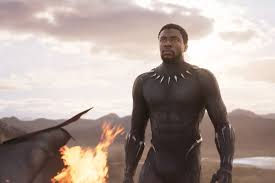The Rise of Amapiano
- eokyere9
- Feb 7, 2022
- 2 min read
Updated: Feb 11, 2022
Whether you actively listen to African music or not, it’s likely that by now you’ve heard Amapiano. The South African genre, which fuses deep house, Kwaito basslines, high pitched melodies, and captivating percussion has taken over in recent times. So what is Amapiano and why has it become so popular?
According to DJ Moma, Amapiano stems from New York’s soulful house movement, “Especially on the drum programming, because it just has that African sound.” In the mid-1990s, kwaito, a subgenre birthed as the country celebrated the end of apartheid, emerged. It’s a fusion of African melodies, hip-hop, reggae, and U.S. house, slowed to roughly 105 bpm. After kwaito, came Afro-house, which was most popular in the 2000s followed by gqom in the early 2010s. The sound reached its cultural peak around 2018, and while it continued to make waves in the years that followed, by early 2019, Amapiano had taken over South African radio and clubs.

DJ Moma
Amapiano began to gain popularity in South African townships in 2016. It has since spread rapidly and organically through WhatsApp and ride-shares, spawning its own evolution and subgenres. Covid-19 seemed to hinder the growth of the genre, which is enjoyed in a public setting with a dance floor, but as lockdown measures worldwide started to ease, the appreciation for Amapiano has increased with the sound taking over the party scene. Tunes such as “Labantwana Ama Uber,” by Semi Tee of Soweto and Shay’mpempe became the soundtracks to these parties. Major League DJz’ recording of their sets on YouTube also allowed South Africans to take part in the partying even if they weren’t present.

Major League DJz’
The Amapiano sound has transcended the borders of South Africa though, with other nations giving their own spin on the unique instrumentals. There have been several Amapiano inspired tracks from Nigeria in particular (sometimes jokingly referred to as “omopiano”), including smash hits like Monalisa by Lojay and High by Davido and Adekunle Gold. There have also been collaborations between Amapiano superstars and Nigerian Artists, such as Sponono featuring one of the pioneers of the genre, Kabza de Small as well as heavy hitters Burna boy and Wizkid along with Ke Star by Focalistic and Davido. However, despite contributing to its popularity, it would be false for me to attribute the success of the sound to these collaborations.

Kabza de Small
The emergence of “Yanos” (fans of Amapiano) can largely be down to the culture surrounding Amapiano music, it’s more than just a sound. Viral videos of DJ Uncle Waffles showed her immersed in the music she was playing, with the crowd simultaneously looking on in awe and dancing with her. Clips like these add to the allure of the genre. The internet has inevitably contributed to the popularity of the genre as well. On TikTok, the #amapiano hashtag stands at more than 2.3 billion views with several sounds such as the “You wanna bamba” challenge going viral, as well as dance videos to Amapiano tracks (and imitations of these dance videos).
With such a rapid surge in popularity, it seems like Amapiano has no intention of slowing down - it’s safe to say that for now, Amapiano is truly the Champion Sound.
Listen to these Amapiano sounds and more:
https://open.spotify.com/album/6831TJYXJuShA212mn1yVi?highlight=spotify:track:4iwiYqzoLImJraKQ9Pf2I2



Comments